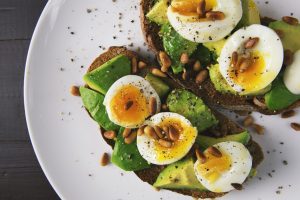Leave it to the hipsters to take something simple like toast and take it to another level. In San Francisco, eateries like The Mill are charging $4 for a piece of thick-sliced toast with Nutella. How is it different than what you eat at home? For one thing, the bread is made by a real pro (aptly named Baker) who grinds the whole-grain flour at the restaurant and uses a sourdough starter instead of yeast. Each fresh loaf takes 36 hours.
The work doesn’t end there. Baker is also very picky about temperature and toasts his bread with toasters that go up to 750-degrees. You want that really high, fast heat in order to make the outside of the bread crisp without drying out the insides. Once the bread is toasted, The Mill always salts and butters the bread before any other toppings are added, to bring out the flavors of cinnamon, fruit preserves, and so on.
If you don’t live in an area where “artisan toast” is taking off, you can make your own by following Baker’s techniques. The first step is to choose a good bread. Fresh is best, according to professional bakers, and you want to buy the bread before it is sliced, so you can control the thickness. Pre-sliced bread is usually too thin for layered toppings like goat cheese with tomato slices.

Artisan Toast Trend: How to Make Your Own at Home
Next, you pick a toasting method. You can use a regular toaster, toaster oven, or a griddle. Certain methods give you more control over the shade and heat, and you know what you like best. In general, you want a good crisp on the outside, so you want to choose a toasting method that gets the bread HOT.
If you decide to go with Baker’s butter method, choose real butter. It’s healthier in the long-run and just tastes better. Organic sea salt has the same benefits. Now, comes the fun part: choosing toppings.
Some “artisan toast” toppings include, but are by far not limited to:
- Ricotta and fig
- Nut butter, fruit jam, and lemon zest
- Hummus, cucumber, basil, and black pepper
- Mascarpone and sliced peaches
- Flavored goat cheese
- Smashed avocado, honey, and sea salt
When you’re experimenting, it’s always good to start with a soft base (a nut butter, soft cheese), followed by a fruit or vegetable with a contrasting flavor, and then finish it off with a garnish, like lemon zest, olive oil, or black pepper.




